After our visit to USS Constitution Museum and the World War II Fletcher-class destroyer USS Cassin Young, Jandy and I proceeded to the highlight of our tour of the Charlestown Navy Yard – our visit to the USS Constitution. There was already a long queue of visitors waiting for the gates to open when we arrived (it opened at 3:30 PM). To get in, we had to show valid IDs (in this case our passports).
Check out “USS Constitution Museum” and “USS Cassin Young“
The USS Constitution, a wooden-hulled, three-masted heavy frigate of the United States Navy launched in 1797, is usually berthed at Pier 1 of the former Charlestown Navy Yard, at one end of Boston’s Freedom Trail but, during our visit, it was in Dry Dock 1 (here since May 18, 2015) for her scheduled 2-year restoration program to restore the copper sheets on the ship’s hull and replace additional deck boards. The lower deck was stripped of her guns.
Check out “Freedom Trail“
Constitution is most noted for her actions during the War of 1812 against the United Kingdom, when she captured numerous merchant ships and defeated the British warships HMS Guerriere, Java, Pictou, Cyane and Levant during four separate engagements. She earned the nickname “Old Ironsides” because the cannon fire during here encounter with the Guerriere seemed as if they couldn’t penetrate her strong oak hull.
Constitution’s stated mission today is to promote understanding of the Navy’s role in war and peace through educational outreach, historical demonstration, and active participation in public events as part of the Naval History & Heritage Command.
As a fully commissioned U.S. Navy ship, her crew of 60 officers and sailors participate in ceremonies, educational programs, and special events while keeping her open to visitors year round and providing free tours.
The officers and crew are all active-duty U.S. Navy personnel, and the assignment is considered to be special duty in the U.S. Navy. Traditionally, command of the vessel is assigned to a Navy commander.
The Constitution, open to the public year-round, typically makes at least one “turnaround cruise” each year, during which she is towed into Boston Harbor to perform underway demonstrations, including a gun drill. She then returns to her dock in the opposite direction to ensure that she weathers evenly. The “turnaround cruise” is open to the general public based on a “lottery draw” of interested persons. The privately run USS Constitution Museum is nearby, located in a restored shipyard building at the foot of Pier Two.
Here are some interesting trivia regarding this historic ship:
- It was named by Pres. George Washington after the Constitution of the United States of America.
- The Constitution was one of six original frigates authorized for construction by the Naval Act of 1794and the third constructed. Joshua Humphreys designed the frigates to be the young Navy’s capital ships, and so Constitution and her sisters were larger and more heavily armed and built than standard frigates of the period. She was built in the North End of Boston, Massachusetts at Edmund Hartt‘s shipyard.
- Her first duties with the newly formed U.S. Navy were to provide protection for American merchant shipping during the Quasi-War with France and to defeat the Barbary pirates in the First Barbary War.
- She is the world’s oldest commissioned naval vessel still afloat
- The battle with Guerriere earned her the nickname of “Old Ironsides” and public adoration that has repeatedly saved her from scrapping.
- Though the Constitution was rated as a 44-gun frigate, she often carried more than 50 guns at a time.
- During the War of 1812, Constitution’s battery of guns typically consisted of thirty 24-pounder (11 kgs.) cannons, with 15 on each side of the gun deck. A total of 22 cannons were deployed on the spar deck, 11 per side, each a 32-pounder (15 kgs.) carronade. Four chase guns were also positioned, two each at the stern and bow.
- Constitution’s hull was built 530 mm. (21 in.) thick and her length between perpendiculars was 53 m. (175 ft.), with a 62 m. (204 ft.) length overall and a width of 13.26 m. (43 ft. 6 in.).
- Her six-sail battle configuration consisted of jibs, topsails and driver.
- In total, 24 hectares (60 acres) of trees, primarily pine and oak (including southern live oak which was cut from Gascoigne Bluff and milled near Simons, Georgia) were needed for her construction.
- Many times, souvenirs were made from her old planking. Isaac Hull ordered walking canes, picture frames and even a phaeton that was presented to Pres. Andrew Jackson. Funds for her 1927-1931 restoration were also raised from memorabilia made of her discarded planking.
- Busts, depicting Isaac Hull, William Bainbridge and Charles Stewart, were added to her stern, remaining in place for the next 40 years. A figurehead of President Andrew Jackson witht a top hat was also installed under the bowsprit, a subject of much controversy due to Jackson’s political unpopularity in Boston at the time. Another likeness of Jackson, this time with a more Napoleonic pose, was installed in 1847.
- Most of the required funds for her 1927-1931 restoration were raised privately. In 1924, the estimated cost of her repair was US$400,000 but it reached over US$745,000 after costs of materials were realized. The first effort, sponsored by the national Elks Lodge, raised US$148,000 from pennies donated by schoolchildren. In September 1926, Wilbur Secretary of the Navy Curtis D. Wilbur began to sell copies of a painting of Constitution at 50 cents per copy. The silent film Old Ironsides, portraying Constitution during the First Barbary War, premiered in December 1926, helped spur more contributions to her restoration fund. Memorabilia made of her discarded planking and metal also raised funds. More than US$600,000 was eventually raised after expenses, still short of the required amount. To complete the restoration, Congress approved up to US$300,000. The final cost of the restoration was US$946,000.
- Materials for its restoration, especially the live oak needed, were difficult to find. Lt. John A. Lord, selected to oversee the 1927-1931 reconstruction project, uncovered a long-forgotten stash of some 1,500 short tons (1,400 t) of live oak (cut sometime in the 1850s for a ship building program that never began) at Naval Air Station Pensacola, Florida. During her 1973-1974 restoration, large quantities of red oak, added in the 1950s as an experiment to see if it would last better than the live oak, were removed and replaced (it had mostly rotted away by 1970). “Constitution Grove,” a 100 sq. km. (25,000-acre) tract of land located at the Naval Surface Warfare Center in Indiana dedicated by Cmdr. Tyrone G. Martin in May 1976, now supplies the majority of the white oak required for repair work. For the 1995 restoration, live oak trees felled by Hurricane Hugo in 1989 were also donated by the city of Charleston, South Carolina. The International Paper Company also donated live oak from its own property.
- For the 3-year tour of the country in the 1930s, many amenities were installed to prepare her including water piping throughout, modern toilet and shower facilities, electric lighting to make the interior visible for visitors, and several peloruses for ease of navigation. The tour began with much celebration and a 21-gun salute, at Portsmouth, New Hampshire. Due to the schedule of visits on her itinerary (90 port cities along the Atlantic, Gulf, and Pacific coasts), she was towed by the minesweeper Grebe and she went as far north as Bar Harbor, Maine, south and into the Gulf of Mexico then through the Panama Canal Zone, and north again to Bellingham, Washington on the Pacific Coast.
- Since her 1927–1931 restoration, all of the guns aboard Constitution are replicas. Most were cast in 1930, but two carronades on the spar deck were cast in 1983. In order to restore the capability of firing ceremonial salutes, a modern 40 mm. (1.6 in.) saluting gun was hidden inside the forward long gun on each side during her 1973–1976 restoration.
- During the 1976 Bicentennial, over 900,000 visitors toured “Old Ironsides.”
- The Naval History and Heritage Command Detachment Boston, responsible for planning and performing her maintenance, repair, and restoration, keeping her as close as possible to her 1812 configuration, estimates that approximately 10–15%of the timber in Constitution contains original material installed during her initial construction period in the years 1795–1797.
- In 2003, the special effects crew from the production of Master and Commander: The Far Side of the World spent several days using Constitution as a computer model, using stem-to-stern digital image scans of “Old Ironsides,”for the fictional French frigate Acheron.
Here’s the historical timeline of the Constitution:
- On November 1, 1794, the Constitution’s keel is laid down at Edmund Hartt‘s shipyard in Boston, Massachusetts under the supervision of Capt. Samuel Nicholson and master shipwright George Claghorn
- On September 20, 1797, the Constitution is launched in a ceremony attended by Pres. John Adams and Massachusetts Gov. Increase Sumner.
- On October 21, 1797, after a month of rebuilding the ways, the Constitution finally slips into Boston Harbor, with Capt. James Sever breaking a bottle of Madeira wine on her bowsprit.
- On the evening of July 22, 1798, she puts to sea, with orders to patrol the Eastern seaboard between New Hampshire and New York.
- On September 8, 1798, off the coast of Charleston, South Carolina, the Constitution intercepts the Niger, a 24-gun ship sailing with a French crew, en route from Jamaica to Philadelphia, claiming to have been under the orders of Great Britain. Nicholson has the crewmen imprisoned, placing a prize crew aboard Niger and bringing her into Norfolk, Virginia. The ship and her crew are released to continue their voyage and the American government pays a restitution of $11,000 to Great Britain.
- On December 29, 1798, after repairs to her bowsprit which was severely damaged in a gale, the Constitution departs Boston.
- On January 15, 1799, the Constitution intercepts the Spencer, an English merchantman which had been taken prize by the French frigate L’Insurgente a few days prior. Though technically a French ship operated by a French prize crew, Nicholson releases the Spencer and her crew the next morning.
- On March 1, 1799, the Constitution encounters HMS Santa Margarita whose captain was an acquaintance of Nicholson. The two agree to a sailing duel and, after 11 hours of sailing, Santa Margarita lowers her sails and admits defeat, paying off the bet with a cask of wine to Nicholson.
- On March 27, 1799, the Constitution manages to recapture the American sloop Neutrality and, a few days later, the French ship Carteret.
- On May 14, 1799, she returns to Boston and Nicholson was relieved of command.
- On July 23, 1799, after repairs and resupply are completed, the Constitution departs Boston, now under the command of Capt. Silas Talbot, for Saint-Domingue in the West Indies, via Norfolk, on a mission to interrupt French shipping.
- On September 15, 1799, she takes the Amelia from a French prize crew and Talbot sends the ship back to New York City with an American prize crew.
- On October 15, 1799, the Constitution arrives at Saint-Domingue and rendezvous with Boston, General Greene and Norfolk.
- On July 13, 1800, she puts into Cap Français for repairs of her mainmast.
- On July 23, 1800, the Constitution is relieved of duty by the Constellation.
- On August 24, 1800, after the Constitution escorts 12 merchantmen to Philadelphia, she puts in at Boston where she receives new masts, sails and rigging.
- On December 17, 1800, the Constitution again sails for the West Indies as squadron flagship, rendezvousing with Congress, Adams, Augusta, Richmond and Trumbull.
- On July 2, 1802, she is placed in ordinary.
- On May 13, 1803, during the Quasi-War with the Barbary States, Capt. Edward Preble recommissions Constitution as his flagship and makes preparations to command a new squadron for a blockade attempt.
- On August 14, 1803, the Constitution departs Boston.
- On September 6, 1803, she almost has a near encounter with the HMS Maidstone, a 32-gun frigate, near the Rock of Gibraltar.
- On September 12, 1803, the Constitution arrives at Gibraltar where Preble waits for the other ships of the squadron.
- On October 3, 1803, the Constitution and Nautilus departs Gibraltar
- On October 4, 1803, they arrive at Tangiers. Adams and New York arrives the next day. With four American warships in his harbor, the Sultan was glad to arrange the transfer of ships between the two nations
- On October 14, 1803, Preble departs with his squadron, heading back to Gibraltar.
- On the morning of August 3, 1804, the Constitution, Argus, Enterprise, Scourge, Syren, six gunboats, and two bomb ketches arrive and immediately begin operations for the attack on Tripoli. In the harbor, Constitution and her squadron severely damage or destroy, in a series of attacks over the coming month, the 22 Tripoline gunboats that meet them, taking their crews prisoner. Constitution primarily provided gunfire support, bombarding the shore batteries of Tripoli.
- On August 11, 1804, the Constitution is ordered to Malta for repairs and, while en route, captures two Greek vessels attempting to deliver wheat into Tripoli.
- On August 12, 1804, a collision with the President, attributed to a sudden change in wind direction, severely damages the ship’s bow, stern and the figurehead of Hercules.
- On November 9, 1804, while she underwent repairs and resupply in Malta, Capt. John Rodgers assumes command of Constitution.
- On April 5, 1805, she resumes the blockade of Tripoli, capturing a Tripoline xebec, along with two prizes that the xebec had captured.
- On June 3, 1805, a peace treaty with Tripoli was signed on board the Constitution
- On July 30, 1805, she arrives in Tunis.
- On August 14, 1805, after a a short-term blockade of the harbor by the Constitution, Congress, Constellation, Enterprise, Essex, Franklin, Hornet, John Adams, Nautilus, Syren and eight gunboats, a peace treaty was signed.
- On May 29, 1806, after performing routine patrols and observing the French and Royal Navy operations of the Napoleonic Wars, Rodgers turns over the command of the squadron and Constitution to Capt. Hugh G. Campbell.
- On May 15, 1807, James Barron sails the Chesapeake out of Norfolk to replace Constitution as the flagship of the Mediterranean squadron. However, he encounters HMS Leopard, resulting in the Chesapeake–Leopard Affair and delaying the relief of Constitution.
- On September 8, 1807, Campbell and the squadron are ordered home and set sail for Boston
- On October 14, 1807, the squadron arrives in Boston.
- On December 1807, the Constitution is recommissioned, with Capt. John Rodgers again taking command to oversee a major refitting and overhaul at a cost just under $100,000.
- On June 1810, Isaac Hull takes command.
- On August 5, 1811, Hull departs for France, transporting the new Ambassador Joel Barlow and his family, arriving on September 1.
- On February 18, 1812, they arrive back to the United States.
- On July 12, 1812, after war is declared with Britain on June 18, Hull put to sea attempting to join the five ships of a squadron under the command of Rodgers in the President.
- On July 17, 1812, off Egg Harbor, New Jersey, Hull sights 5 ships (HMS Aeolus, Africa, Belvidera, Guerriere and Shannon) of a British squadron out of Halifax. They sight the Constitution and give chase.
- On July 19, 1812, after a 57-hour chase, the Constitution finally outruns the squadron, pumping overboard 2,300 US gal (8.7 kl) of drinking water and pulled far enough ahead of the British that they abandoned the pursuit.
- On July 27, 1812, Constitution arrives in Boston and remains there just long enough to replenish her supplies.
- On August 2, 1812, to avoid being blockaded in port, Hull sails without orders, heading on a northeast route towards the British shipping lanes near Halifax and the Gulf of Saint Lawrence. Constitution captures 3 British merchantmen, which Hull burns rather than risk taking them back to an American port.
- On August 16, 1812, he sails in pursuit of a British frigate 190 kms. (120 mi.) to the south.
- On August 19, 1812, he sights the frigate HMS Guerriere and, after a furious battle, the Constitution’s sailing ability and heavier broadsides turned the British frigate into an unmanageable hulk, with close to a third of her crew wounded or killed, while Constitution remained largely intact as many of the British shots had rebounded harmlessly off its hull. The British surrendered. The Guerriere was so badly damaged that she was not worth towing to port and, the next morning, Hull ordered her to be burned after transferring the British prisoners onto Constitution.
- On August 30, 1812, the Constitution arrives back in Boston where Hull and his crew find that news of their victory has spread fast, and they are hailed as heroes.
- On September 8, 1812, William Bainbridge takes command of the Constitution and prepares her for another mission in British shipping lanes near Brazil
- On October 27, 1812, she sets sail with the Hornet
- On December 13, 1812, they arrive near São Salvador, sighting HMS Bonne Citoyenne in the harbor. The captain of Bonne Citoyenne, reportedly carrying $1,600,000 in specie to England, refuses to leave the neutral harbor lest he lose his cargo. Constitution sails offshore in search of prizes, leaving Hornet to await the departure of Bonne Citoyenne.
- On December 29, 1812, she meets with HMS Java, under Capt. Henry Lambert and, after continuously raking her with broadsides, Java lays in shambles, an unmanageable wreck with a badly wounded crew, and she surrenders. Java is far too damaged to retain as a prize and Bainbridge orders her burned. Bainbridge is wounded twice during the battle.
- On January 1, 1813, Constitution returns to São Salvador to disembark the prisoners of Java, where she meets with Hornet and her two British prizes.
- On January 5, 1813, Bainbridge orders Constitution to sail for Boston for extensive repairs.
- On February 15, 1813, the Constitution arrives in Boston to even greater celebrations than Hull had received a few months earlier.
- On July 18, 1813, Charles Stewart takes command of the ship, struggling to complete the construction and recruitment of a new crew.
- On December 31, 1813, she finally makes sail, setting course for the West Indies to harass British shipping.
- By late March 1814, she captures 5 merchant ships and the 14-gun HMS Pictou. She also pursues HMS Columbine and HMS Pique but, after realizing that she is an American frigate, both ships escape.
- On March 27, 1814, her mainmast splits off the coast of Bermuda requiring immediate repair.
- On April 3, 1814, while enroute to Boston, British ships HMS Junon and Tenedos pursue her but, after drinking water, food and spirits were cast overboard to lighten her load and gain speed, she makes her way into Marblehead, Massachusetts where the British call off the pursuit. Two weeks later, Constitution makes her way into Boston harbor where she remains blockaded in port until mid-December.
- On the afternoon of December 18, 1814, the Constitution escapes from Boston Harbor and again sets course for Bermuda. Capt. George Collier gathers a squadron consisting of the 50-gun HMS Leander, Newcastle and Acasta and sets off in pursuit, but he was unable to overtake her.
- On December 24, 1814, the Constitution intercepts the merchantman Lord Nelson and places a prize crew on board.
- On February 8, 1815, Constitution is cruising off Cape Finisterre when Stewart learns that the Treaty of Ghent has been signed.
- On February 16, 1815, realizing that a state of war still exists until the treaty is ratified, the Constitution captures the British merchantman Susanna (her cargo of animal hides were valued at $75,000).
- On February 20, 1815, the Constitution sights the small British ships Cyane and Levant sailing in company and gives chase, capturing both of them.
- On March 10, 1815, the trio arrives at Porto Praya at the Cape Verde Islands.
- On the morning of March 11, 1815, Collier’s squadron was spotted on a course for the harbor, and Stewart orders all ships to sail immediately. Cyane is able to elude the squadron and make sail for America, where she arrives on April 10, but Levant is overtaken and recaptured. While Collier’s squadron was distracted with Levant, the Constitution makes its escape.
- On April 2, 1815, Constitution puts into Maranhão to offload her British prisoners and replenish her drinking water.
- On April 28, 1815, after receiving verification of Treaty of Ghent at San Juan, Puerto Rico, the Constitution sets course for New York
- On May 15, 1815, the Constitution arrives in New York to large celebrations.
- In January 1816, Constitution is moved to Boston and placed in ordinary, sitting out the Second Barbary War.
- In April 1820, Isaac Hull, now Charlestown Navy Yard’s commandant, directs a refitting of Constitution to prepare her for duty with the Mediterranean Squadron.
- On May 13, 1821, the Constitution, now under Jacob Jones, departs on a three-year uneventful tour of duty in the Mediterranean, sailing in company with Ontario and Nonsuch.
- On May 31, 1824, Constitution arrives in Boston and Jones is relieved of command, replaced by Thomas Macdonough.
- On October 29, 1824, the Constitution sails for the Mediterranean under the direction of John Rodgers in North Carolina.
- During December and into January 1826, Constitution puts in for repairs.
- On February 21, 1826, Daniel Todd Patterson assumes command after Macdonough resigns his command for health reasons on October 9, 1825.
- By August 1826, she puts into Port Mahon, suffering decay of her spar deck, and she remains there until temporary repairs are completed in March 1827.
- On July 4, 1828 Constitution returned to Boston and was placed in reserve.
- On September 14, 1830, an article appeared in the Boston Advertiser which erroneously claims that the Navy intended to scrap Constitution.
- On September 16, 1830, Oliver Wendell Holmes‘ poem “Old Ironsides” is published in the same paper and later all over the country, igniting public indignation and inciting efforts to save “Old Ironsides” from the scrap yard.
- After Secretary Branch approves the repair cost of over $157,000, and Constitution begins a leisurely repair period while awaiting completion of the dry dock, then under construction at the yard.
- On June 24, 1833, Constitution enters dry dock and Capt. Jesse Elliott, the new commander of the Navy yard, oversees her reconstruction. Constitution had 760 mm. (30 in.) of hogin her keel and she remains in dry dock until June 21, 1834.
- In March 1835, the Constitution, with Elliot in command, gets underway to New York
- On March 16, 1835, Constitution sets a course for France to deliver Edward Livingston to his post as Minister.
- On April 10, 1835, she arrives in France
- On May 16, 1835, Constitution begins the return voyage back to Boston
- On June 23, 1835, she arrives back in Boston
- On August 19, 1835, Constitution sails again to take her station as flagship in the Mediterranean
- On September 19, 1835, she arrives at Port Mahon to begin her uneventful duty over the next two years as she and United States make routine patrols and diplomatic visits.
- From April 1837 into February 1838, Elliot collects various ancient artifacts to carry back to America.
- On July 31, 1835, Constitution arrives in Norfolk.
- On March 1, 1839, as flagship of the Pacific Squadron under the command of Capt. Daniel Turner, she begins her next voyage with the duty of patrolling the western coast of South America, visiting Valparaíso, Callao, Paita and Puna.
- On August 29, 1841, on her return voyage, Emperor Pedro II of Brazil visits her at Rio de Janeiro.
- On October 31, 1841, she returns to Norfolk.
- On June 22, 1842 she is recommissioned, under the command of Foxhall Alexander Parker, for duty with the Home Squadron. After spending months in port she puts to sea for 3 weeks during December, then is again put in ordinary.
- In late 1843, she is moored at Norfolk, serving as a receiving ship.
- On November 6, 1843, Capt. John Percival makes necessary repairs and upgrades on the ship at a cost of $10,000 and after several months of labor.
- On May 29, 1844, Constitution gets underway carrying Ambassador to Brazil Henry A. Wise and his family
- On August 2, 1844, after making two port visits along the way, she arrives at Rio de Janeiro.
- On September 8, 1844, Constitution sails again, making port calls at Madagascar, Mozambique, and Zanzibar
- On January 1, 1845, she arrives in Sumatra where many of her crew begin to suffer from dysentery and fevers, causing several deaths, which leads Percival to set course for Singapore
- On February 8, 1845, Constitution arrives in Singapore where Commodore Henry Ducie Chads (a lieutenant in the Java when she surrendered to William Bainbridge 33 years earlier) of the HMS Cambrian pays a visit to Constitution, offering what medical assistance his squadron could provide.
- On May 10, 1845, after leaving Singapore, Constitution arrives in Turon, Cochinchina (present day Da Nang, Vietnam).
- On May 26, 1845, after failing to obtain the release of French missionary Dominique Lefèbvre who was being held captive under sentence of death, the Constitution departs.
- On June 20, 1845, she arrives in Canton, China and spends the next six weeks there, with Percival making shore and diplomatic visits.
- On September 18, 1845, she reaches Manila, spending a week there preparing to enter the Pacific Ocean.
- On September 28, 1845, she sails for the Hawaiian Islands
- On November 16, 1845, the Constitution arrives in Honolulu where she finds Commodore John D. Sloat and his flagship Savannah there
- On January 13, 1846, after provisioning for six months, the Constitution arrives in Mazatlán, Mexico as the United States was preparing for war after the Texas annexation.
- On April 22, 1846, after sitting at anchor for more than 3 months, she sails for home.
- On July 4, 1846, she rounds Cape Horn. Upon arrival at Rio de Janeiro, the ship’s party learns that the Mexican War had begun on May13, soon after their departure from Mazatlán.
- On September 27, 1846, she arrives in Boston
- On October 5, 1846, the Constitution is mothballed.
- In 1847, the Constitution begins refitting for duty with the Mediterranean Squadron.
- On December 9, 1848, under Capt. John Gwinn, the Constitution departs.
- On January 19, 1849, she arrives in Tripoli.
- On August 1, 1849, at Gaeta, she receives King Ferdinand II and Pope Pius IX on board, giving them a 21-gun salute, the first time that a Pope set foot on American territory or its equivalent.
- On September 1, 1849, Capt. Gwinn dies of chronic gastritis at Palermo and, on September 9, is buried near Lazaretto.
- On September 18, 1849, Capt. Thomas Conover assumes command and resumes routine patrolling for the rest of the tour,
- On December 1, 1850, she heads home and is involved in a severe collision with the English brig Confidence, cutting her in half and sinking her with the loss of her captain. The surviving crew members are carried back to America
- On January 1851, the Constitution is again put back in ordinary, this time at the Brooklyn Navy Yard.
- On December 22, 1852, the Constitution is recommissioned under the command of John Rudd.
- On March 2, 1853, she departs the yard on a leisurely sail towards Africa, carrying Commodore Isaac Mayo for duty with the African Squadron
- On June 18, 1853, she arrives in Africa with Mayo making a diplomatic visit in Liberia to arrange a treaty between the Gbarbo and the Grebo tribes, resorting to firing cannons into the village of the Gbarbo in order to get them to agree to the treaty.
- On November 3, 1853, near Angola, the Constitution takes the American ship H. N. Gambrill (the Constitution’s final capture), which was involved in the slave trade, as a prize.
- On March 31, 1855, she sails for home but is diverted to Havana, Cuba
- On March 16, 1855, she arrives in Havana
- On March 24, 1855, she departs Havana for Portsmouth Navy Yard
- On June 14, 1855, she is decommissioned, ending her last duty on the front lines.
- In 1857, Constitution is moved to dry dock at the Portsmouth Navy Yard for conversion into a training ship. Classrooms are added on her spar and gun decks and her armament is reduced to only 16 guns. Her rating was changed to a “2nd rate ship.”
- On August 1, 1860, she is recommissioned and moves from Portsmouth to the US Naval Academy.
- In April 1861, at the outbreak of the Civil War, Constitution is ordered to relocate farther north after threats are made against her by Confederate sympathizers. Several companies of Massachusetts volunteer soldiers are stationed aboard for her protection.
- On April 29, 1861, she arrives in New York City after being towed there by R. R. Cuyler. She was subsequently relocated, along with the Naval Academy, to Fort Adams in Newport, Rhode Island for the duration of the war.
- On August 1865, Constitution, along with the rest of the Naval Academy, moves back to Annapolis. Once settled in at the Academy, a series of upgrades are installed that includes steam pipes and radiators to supply heat from shore, along with gas lighting.
- From June to August each year, she would depart with midshipmen for their summer training cruise and then return to operate for the rest of the year as a classroom.
- In June 1867, her last known plank owner William Bryant dies in Maine.
- On November 1867, George Dewey assumes command and serves as her commanding officer until 1870.
- In 1871, her condition had deteriorated to the point where she is retired as a training ship
- On September 26, 1871, after being towed to the Philadelphia Navy Yard, she is again placed in ordinary.
- Beginning in 1873, Constitution is overhauled in order to participate in the centennial celebrations of the United States. Work begins slowly and is intermittently delayed by the transition of the Philadelphia Navy Yard to League Island.
- By late 1875, the Navy opens bids for an outside contractor to complete the work
- In May 1876, Constitution is moved to Wood, Dialogue, and Company where a coal bin and a small boiler for heat were installed. At this time The Andrew Jackson figurehead is removed and given to the Naval Academy Museum where it remains today.
- During the rest of 1876, her construction drags on until the centennial celebrations had long passed, and the Navy decided that she would be used as a training and school ship for apprentices.
- On January 9, 1878, Oscar C. Badger takes command to prepare her for a voyage to the Paris Exposition of 1878, transporting artwork and industrial displays to France. Three railroad cars are lashed to her spar deck and all but two cannons are removed.
- On March 4, 1878, she departs for France. While docking at Le Havre, she collides with Ville de Paris, resulting in her entering dry dock for repairs and remaining in France for the rest of 1878.
- On January 16, 1878, she gets underway for the United States
- On January 17, 1878, poor navigation runs her aground near Bollard Head. She is towed into the Portsmouth Naval Dockyard, Hampshire, England, where only minor damage is found and repaired.
- On February 13, 1878, during heavy storms, her rudder is damaged, resulting in a total loss of steering control with the rudder smashing into the hull at random. To secure it, 3 crewmen go over the stern on ropes and boatswain’s chairs.
- The morning of February 14, 1878, they rig a temporary steering system and Badger sets a course for the nearest port
- On February 18, 1878, she arrived in Lisbon where slow dock services delay her departure.
- On April 11, 1878, she departs Lisbon
- On May 24, 1878, she arrives in the United State where Constitution returns to her previous duties of training apprentice boys. Over the next two years, she continues her training cruises.
- In 1881, after it soon became apparent that her overhaul in 1876 had been of poor quality, Constitution was determined to be unfit for service and, as funds were lacking for another overhaul, she was decommissioned, ending her days as an active-duty naval ship. She is moved to the Portsmouth Navy Yard and used as a receiving ship. There, she had a housing structure built over her spar deck, and her condition continued to deteriorate, with only a minimal amount of maintenance performed to keep her afloat.
- In 1896, aware of her condition, Massachusetts Congressman John F. Fitzgerald proposes to Congress that funds be appropriated to restore her enough to return to Boston.
- On September 21, 1897, she arrives, under tow, at the Charlestown Navy Yard and, after her centennial celebrations in October, she lays there with an uncertain future.
- In 1900, Congress authorizes restoration of Constitution but does not appropriate any funds for the project.
- In 1903, the Massachusetts Historical Society‘s president Charles Francis Adams requests Congress that Constitution be rehabilitated and placed back into active service.
- In 1905, after Secretary of the Navy Charles Joseph Bonaparte suggests that Constitution be towed out to sea and used as target practice, after which she would be allowed to sink, Moses H. Gulesian, a businessman from Worcester, Massachusetts, reads about this in a Boston newspaper and offers to purchase her for US$10,000. The State Department refuses, but Gulesian initiates a public campaign which begins from Boston and ultimately “spilled all over the country.”
- In 1906, a storm of protest from the public prompts Congress to authorize US$100,000 for the ship’s restoration. First to be removed was the barracks structure on her spar deck, but the limited amount of funds allowed just a partial restoration.
- By 1907, Constitution begins to serve as a museum ship, with tours offered to the public.
- On December 1, 1917, she is renamed Old Constitution to free her name for a planned, new Lexington-class battle cruiser.
- On July 24, 1925, Old Constitution was granted the return of her name after construction of the lead ship of the class the name Constitution was originally destined for got canceled in 1923 due to the Washington Naval Treaty and the incomplete hull was sold for scrap.
- On February 19, 1924, inspection of her condition by the Board of Inspection and Survey, ordered by Adm. Edward Walter Eberle, Chief of Naval Operations, found her in grave condition.
- On June 16, 1927, Constitution enters dry dock with a crowd of 10,000 observers.
- On March 15, 1930, she emerges from dry dock with approximately 85% of the ship “renewed” (i.e. replaced) to make her seaworthy.
- On July 1, 1931, Constitution is recommissioned under the command of Louis J. Gulliver with a crew of 60 officers and sailors, 15 Marines, and a pet monkey named Rosie that was their mascot.
- On May 1934, after more than 4.6 million people visited her during the 3-year tour, Constitution returns to her home port of Boston, serving as a museum ship and receiving 100,000 visitors per year.
- On September 21, 1938, during the New England Hurricane, Constitution breaks loose from her dock and is blown into Boston Harbor where she collides with the destroyer Ralph Talbot. She only suffers minor damage.
- In 1940, at the request of Pres. Franklin Roosevelt, USS Constellation and Constitution were recommissioned.
- In early 1941, Constitution is assigned the hull classification symbol IX-21 and begins to serve as a brig for officers awaiting court-martial.
- In 1947, The United States Postal Service issues a stamp commemorating Constitution
- In the 1950s, reliable heating for the small maintenance crew who were berthed on the ship was upgraded to a forced-air system and a sprinkler system was added to protect her from fire.
- In 1954, an Act of Congress makes the Secretary of the Navy responsible for her upkeep.
- In 1960, Constitution is designated as a U.S. National Historic Landmark.
- On October 15, 1966, the Constitution is included in the U.S. National Register of Historic Places (NRHP)
- In 1972, funds were approved for her restoration
- In April 1973, she enters dry dock remaining until April 1974.
- In August 1974, as preparations begin for the upcoming United States Bicentennial celebrations. Cmdr. Tyrone G. Martin, who sets the precedent that all construction work on Constitution was to be aimed towards maintaining her to the 1812 configuration for which she is most noted, becomes her captain.
- In September 1975, her hull classification of IX-21 was officially canceled.
- On April 8, 1976, the privately run USS Constitution Museum is opened
- On July 10, 1976, Constitution leads the parade of tall ships up Boston Harbor for Operation Sail, firing her guns at one-minute intervals for the first time in approximately 100 years.
- On July 11, 1976, she renders a 21-gun salute to Her Majesty’s Yacht Britannia, as Queen Elizabeth II and Prince Philip arrived for a state visit. The royal couple, with Cmdr. Martin and J. William Middendorf (Secretary of the Navy), were piped aboard, privately touring the ship for approximately 30 minutes. Upon their departure, the crew of Constitution rendered three cheers for the Queen.
- In 1992, Constitution enters dry dock for an inspection and minor repair period, her most comprehensive structural restoration and repair since she was launched in 1797.
- In 1995, after a US$12 million restoration, she emerges from dry dock.
- On July 20, 1995, Constitutionwas towed from her usual berth in Boston to an overnight mooring in Marblehead, Massachusetts. En route, she made her first sail in 116 years at a recorded 6 knots (11 kms./hr.; 6.9 mph).
- On July 21, 1995, she is towed 5 nautical miles (9.3 kms.; 5.8 mi) offshore, where the tow line is dropped and Cmdr. Beck orders 6 sails set (jibs, topsails, and spanker). She then sails for 40 minutes on a south-south-east course with true wind speeds of about 12 knots (22 kms./hr.; 14 mph), attaining a top recorded speed of 4 knots (7.4 kms./hrs.; 4.6 mph). While she is under sail, the guided missile destroyer Ramage and frigate Halyburton, her modern US naval combatant escorts, render passing honors to “Old Ironsides” and she is overflown by the Blue Angels, the US Navy Flight Demonstration Squadron. Inbound to her permanent berth at Charlestown, off Fort Independence in Boston Harbor, she is rendered a 21-gun salute to the nation.
- In November 2007, Lt.-Cmdr. John Scivier of the Royal Navy, commanding officer of HMS Victory, paid a visit to Constitution, touring the local facilities with Cmdr. William A. Bullard III. They discussed arranging an exchange program between the two ships.
- In November 2010, Constitution emerges from a three-year repair period.
- On August 19, 2012, the anniversary of her victory over Guerriere, the crew of Constitution, under Cmdr. Matt Bonner (Constitution’s 72nd commanding officer), sails Constitution under her own power.
- On May 18, 2015, the ship enters Dry Dock 1 in Charlestown Navy Yard to begin a scheduled 2-year restoration program restore the copper sheets on the ship’s hull and replace additional deck boards. The Department of the Navy provided the US$12–15 million expected cost.
- In August 2015, Cmdr. Robert S. Gerosa Jr. (her 74th and current commanding officer) assumes command of Constitution.
- On July 23, 2017, after the restoration was complete, she was returned to the water.
Here are the general characteristics of the Constitution:
- Tonnage: 1,576
- Displacement: 2,200 tons
- Length: 93 m. (304 ft.), bowsprit to spanker; 63 m. (207 ft.), billet head to taffrail; 53 m. (175 ft.) at waterline
- Beam: 26 m. (43 ft. 6 in.)
- Height: 60 m. (198 ft.), foremast; 67 m. (220 ft.), mainmast; 52.6 m. (172.5 ft.), mizzenmast.
- Draft: 6.4 m. (21 ft.), forward; 7.0 m. (23 ft.), aft
- Depth of Hold: 4.34 m. (14 ft. 3 in.)
- Decks: Orlop, Berth, Gun, Spar
- Propulsion: Sail (three masts, ship rig)
- Sail plan: 3,968 m2 (42,710 sq. ft.) on three masts
- Speed: 24 kms./hr. (13 knots, 15 mph)
- Boats and landing: 1 × 11 m. (36 ft.) longboat, 2 × 9.1 m. (30 ft.) cutters
- Craft carried: 2 × 8.5 m. (28 ft.) whaleboats, 1 × 8.5 m. (28 ft.) gig, 1 × 6.7 m. (22 ft.) jolly boat, 1 × 4.3 m. (14 ft.) punt
- Complement: 450 including 55 Marines and 30 boys (1797)
- Armament: 30 × 24-pounder(11 kgs.) long gun, 20 × 32-pounder (15 kgs.) carronade, 2 × 24-pounder (11 kgs.) bow chasers[2]
USS Constitution: Building 5, Charlestown Navy Yard,Boston, Massachusetts 02129, USA. Tel: +1 617-799-8198. Open Wednesdays to Sundays, 10AM – 4PM. The ship is closed on Thanksgiving Day, Christmas Day and New Year’s Day. Admission: free. Website: www.navy.mil/local/constitution. Note that all guests aged 18 and older must show a state-issued photo ID (like a driver’s license or passport) at security to board the ship. Guests under age 18 do not require an ID.
How to Get There: The GPS address is 1 Constitution Road, Charlestown. You can drive and park in the Nautica Parking Garage across from the Naval Yard Visitor Center or take the Green Line (to North Station) or Orange Line (to Bunker Hill Community College). MBTA Water Shuttle Route F4 (Long Wharf, Boston to Charlestown Navy Yard, Charlestown)

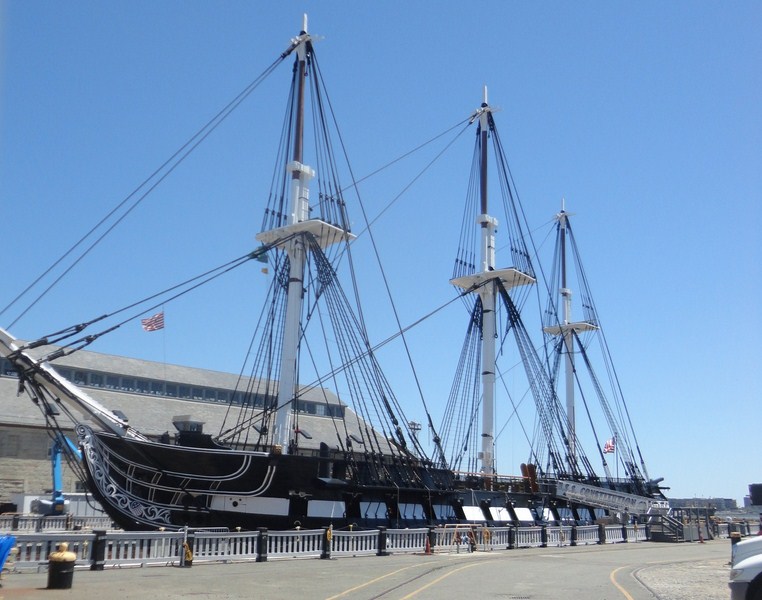
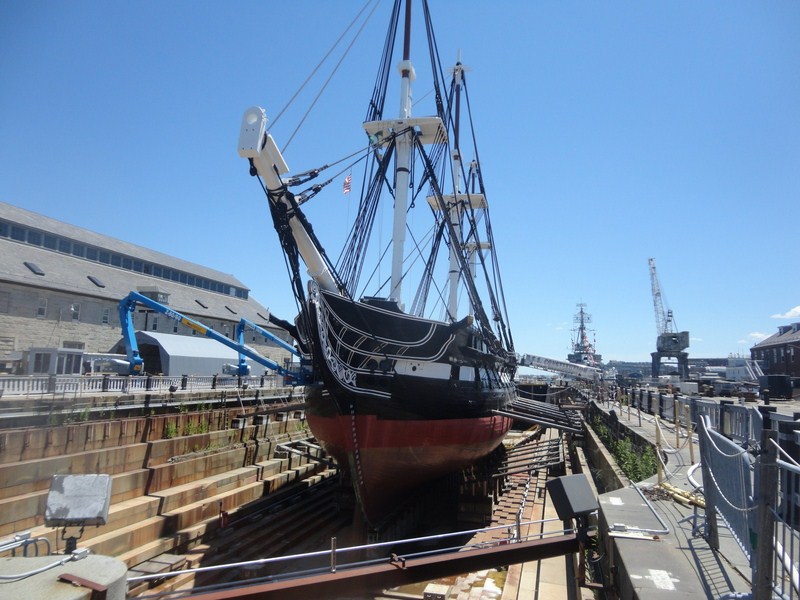

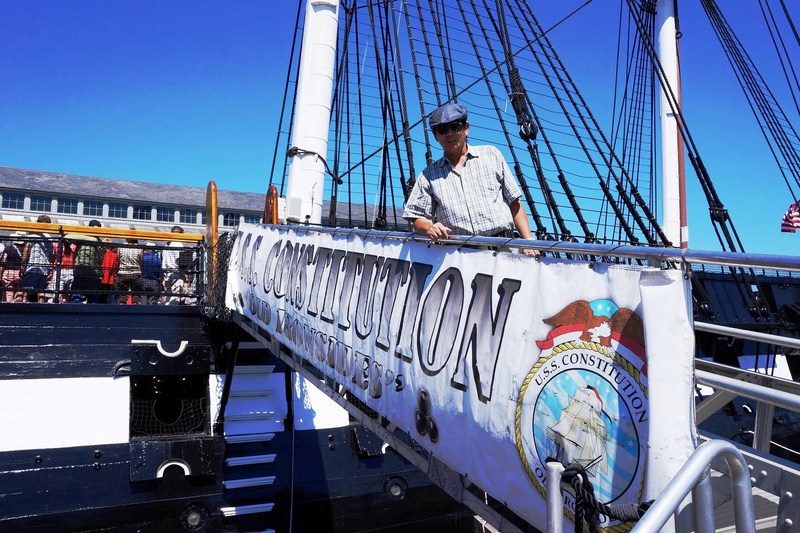
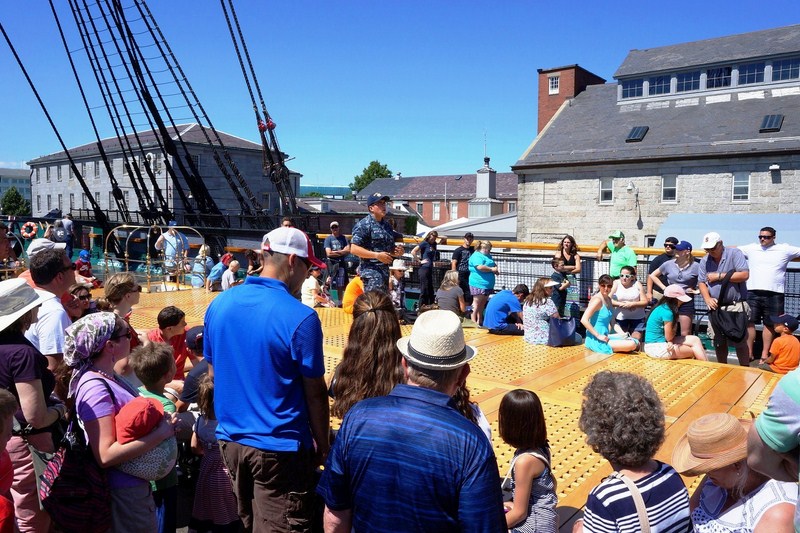
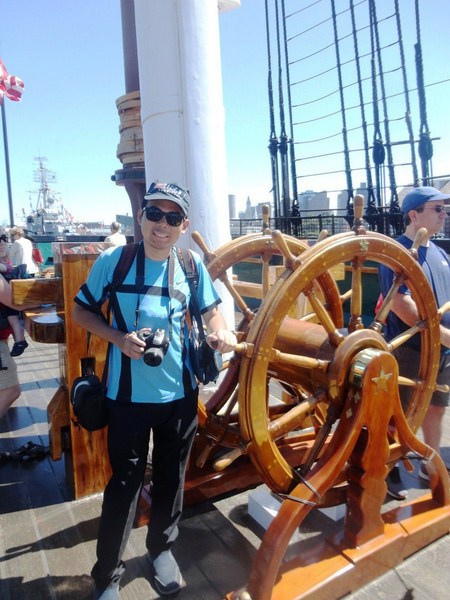
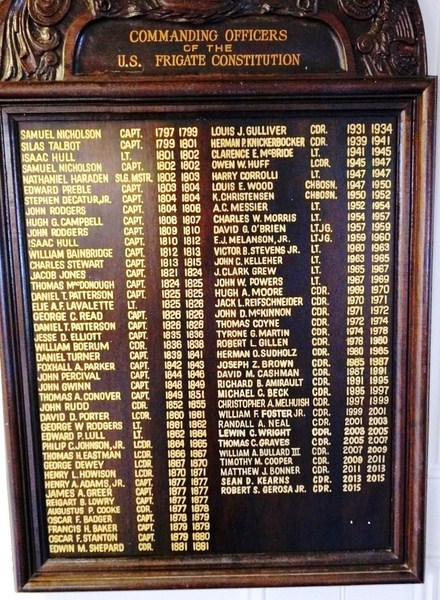
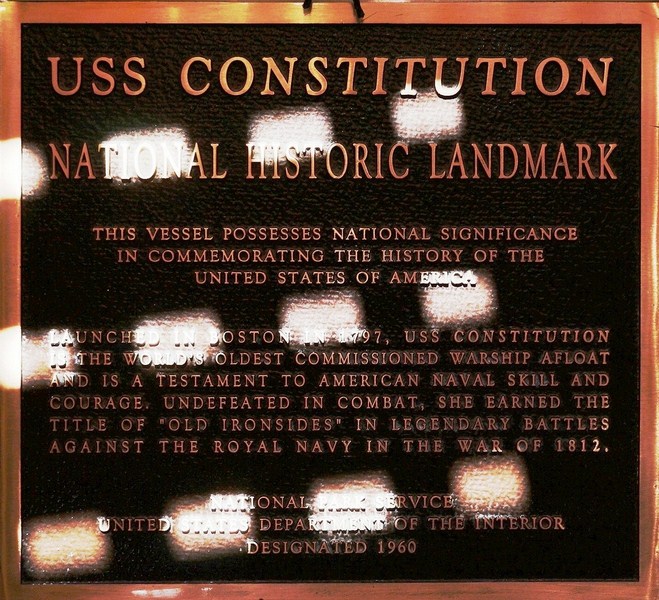
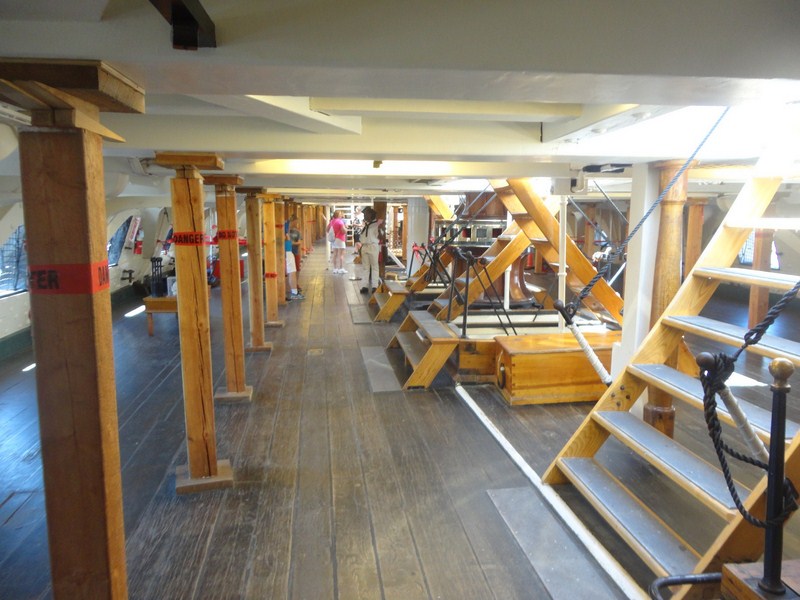
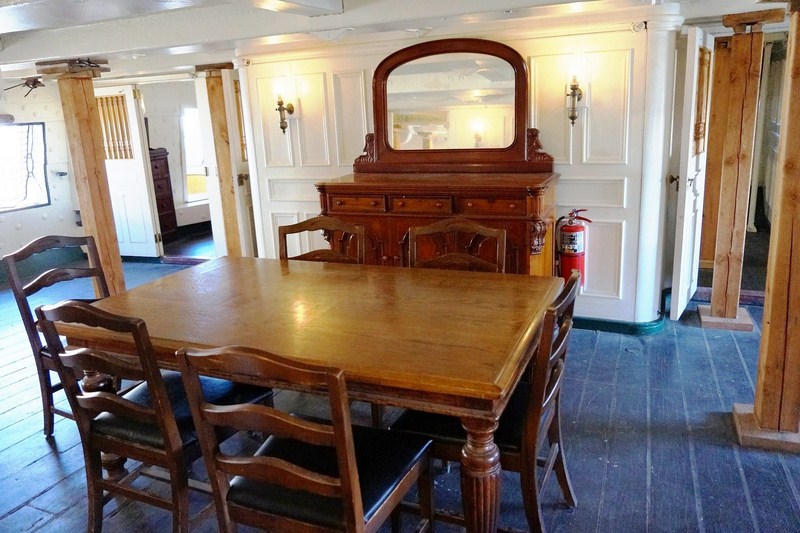

Pingback: USS Cassin Young (Boston, Massachusetts, USA) – B.L.A.S.T. – Live Life to the Fullest ……… Don't Stay Put
Pingback: USS Constitution Museum (Boston, Massachusetts, USA) – B.L.A.S.T. – Live Life to the Fullest ……… Don't Stay Put
Pingback: Freedom Trail (Boston, Massachusetts, U.S.A.) – B.L.A.S.T. – Live Life to the Fullest ……… Don't Stay Put
Thanks for finally writing about >The USS Constitution – Old
Ironsides (Boston, Massachusetts, USA) – B.L.A.S.T.
– Live Life to the Fullest ……… Don’t Stay Put <Loved it!
Hey there! This is my first visit to your blog! We are a group of volunteers and starting a new project
in a community in the same niche. Your blog provided us valuable information to work
on. You have done a marvellous job!